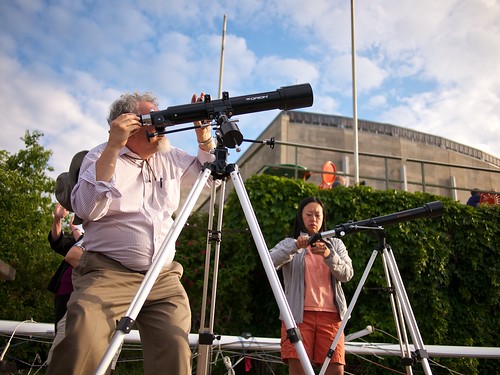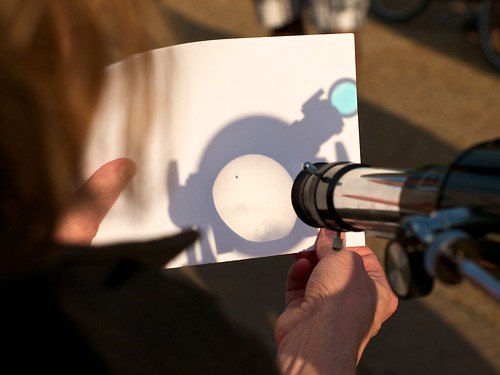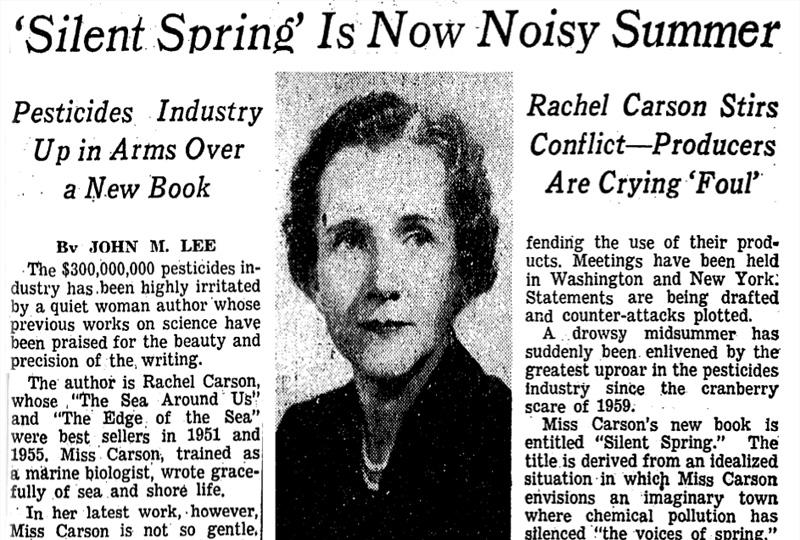An online laboratory for historians of SM&T
Sunday, October 14, 2012
Kepler in Space
Just wanted to share my first blog post over on my website. Did you know that space travel was a popular theme in early-modern fiction?
Friday, October 5, 2012
Sneaky CAPTCHA images contribute to the digitization effort
Recognize this image? Of course you do.

These goofy CAPTCHA images serve as the gatekeeper on many websites such as Facebook, Amazon, and Ticketmaster. Part of their function is to prove that the user is a human rather than a spamming computer, but thanks to the work of Luis von Ahm, a computer scientist at Carnegie Mellon, the CAPTCHA is also contributing to the digitization of books and periodicals. Somehow I hadn't heard about this additional function, although I've filled out perhaps hundreds of these little boxes in the past several years... I blame my dissertator tunnel vision for this.
Despite advances in Optical Character Recognition (OCR), computers are not yet able to match the human mind's amazing ability to recognize symbols such as text, even when they are inconsistent, distorted, or poorly reproduced. Von Ahm has developed a version of the CAPTCHA program, called reCAPTCHA, in which the user is asked to type in two words instead of one. One of these words serves to confirm that the user is human, but the other is an image from a book or periodical, and our response helps to translate the image into text. Several users are given the same image, and if they consistently interpret the image as the same word, it is considered successfully converted to text.
Here's an article from the NPR website with more information about this program: http://www.npr.org/templates/story/story.php?storyId=93605988
and also an article in <i>Science</i>:
http://www.sciencemag.org/content/321/5895/1465.full?sid=e16c1bda-edda-462d-9198-baa2096672f9
Friday, August 31, 2012
Oh, Henrietta, we can live on forever...
I just became aware of a musical tribute to Henrietta Lacks, the subject of last year's Go Big Read book The Immortal Life of Henrietta Lacks and a figure important to the history of science and medicine. The group Yeasayer (who describe themselves as "Middle Eastern-psych-snap-gospel") has written a song called "Henrietta." I think it's quite good and I applaud the band for making a tribute to her.
Labels:
bioethics,
Go Big Read,
Henrietta Lacks,
History of Medicine,
music,
videos,
Yeasayer
Monday, July 9, 2012
The Higgs Boson walks into a church...
Here at the University of Wisconsin, we have a lot of grad students and professors who study science and religion — most famously Ron Numbers and his many students, of whom the two current ones are the accomplished Dana Freiburger and the ecumenical Scott Prinster.
All three gentlemen should probably now dispense the standard church pun-ishment upon me. (I personally grew up atheist, so I have no idea what kind of trouble I'm in for.)
Congratulations, also, to all the hardworking physicists and engineers (you're welcome, Peter Galison) on the discovery of the particle-that-is-statistically-consistent-with-the-Higgs boson! We celebrate your great accomplishment by rejoicing in your use of Comic Sans in science.
(Image credit: it's floating around on facebook, but I can't find the original attribution. I'm not sure memes can have original attribution these days, but that's a whole other blog post...)
All three gentlemen should probably now dispense the standard church pun-ishment upon me. (I personally grew up atheist, so I have no idea what kind of trouble I'm in for.)
Congratulations, also, to all the hardworking physicists and engineers (you're welcome, Peter Galison) on the discovery of the particle-that-is-statistically-consistent-with-the-Higgs boson! We celebrate your great accomplishment by rejoicing in your use of Comic Sans in science.
(Image credit: it's floating around on facebook, but I can't find the original attribution. I'm not sure memes can have original attribution these days, but that's a whole other blog post...)
Labels:
brainstorm,
cosmology,
physics,
science and religion
Saturday, June 9, 2012
History of Science films of note: Isaac Newton, Zombie Hunter
No word yet on whether Shia Labeouf has been tapped for the role of Isaac Newton.
I guess historians of science like doing historical reenactments, like Captain Cook's 1768 expedition to observe the transit of Venus — but it's important to remember that we don't have a monopoly on doing history! According to The Hollywood Reporter, Rob Cohen, director of first Fast and the Furious and The Mummy 3: Tomb of the Dragon Emperor, will soon be teaming up with Rocky producer Gene Kirkwood to write and film a new movie based on Isaac Newton. Via The AV Club:
I'm sure that after writing the Principia, Newton needed something better to do, but I kinda doubt that hanging out with a pain in the rear like John Locke was one of them. On the other hand, if this upcoming movie is anything like Troy, we might want to make this required viewing for undergrad SciRev classes — with a shot whenever Newton's heterodox religion gets cut out of the script, or at least whenever we get to see Brad Pitt's pecs.“Cohen's story will focus on Newton's later years as the head of the Royal Mint, with his film casting Newton as a ‘detective’—perhaps one aided by Newton's older partner John Locke, as sort of an Enlightenment-age Lethal Weapon—with Newton devoting himself primarily to hunting down counterfeiters (and, should Cohen show any interest in actual history, slowly falling apart thanks to a system ravaged by alchemy-provoked mercury poisoning). ”
sources: THR, The AV Club, Lists of Note
image credit: National Geographic, The Michael Bayifier
Thursday, June 7, 2012
Transit of Venus
Although we did not travel to Tahiti, several graduate students and faculty members did gather on the shore of Lake Mendota this Tuesday to try and observe the Transit of Venus. Venus passes in front of the sun periodically, with pairs of transits 8 years apart occurring approximately every 120 years. The most recent transit was in 2004, which meant this was the last opportunity in our lifetimes to witness it.
Aside from being a rare astronomical phenomenon, the Transit of Venus is significant for historical reasons. By combining precise observations of the Transit from multiple sites around the Earth, astronomers in the 17th and 18th centuries hoped to use the principle of parallax to calculate the distance between Venus and the Earth. If this distance could be determined, then the distances of all the planets from the Sun could be calculated using Kepler's law relating the period of a planet's orbit to its distance from the sun [video]. That is to say, scientists would finally know the absolute size of the solar system.
Scientists and explorers from Europe and America mounted expeditions to the far corners of the world to observe the transits of 1761 and 1769. This included the famous first voyage of James Cook, who set out from England to sail around South America at Cape Horn before heading on to the island of Tahiti in the South Pacific. After 8 months at sea, Cook and the scientific observers reached Tahiti and established a small observation post. After successfully recording their data, Cook and his crew continued on to explore the coasts of New Zealand and Australia before gradually making their way through the Indies and around the Cape of Good Hope on their way back to England.
Here in Madison, Mike, Florence, and Robin set up two telescopes at the Memorial Union Terrace. However the weather was mostly cloudy as the transit began. A dinner of beer, bratwurst, and sauerkraut helped our intrepid scholars ward off scurvy while waiting for the clouds to part.

Finally, about an hour into the transit, we began to see gaps in the clouds and sunlight breaking through in the west. As the sun came into view Mike and Florence quickly re-calibrated the telescopes.

One telescope had a solar filter that allowed viewers to look directly at the Sun and Venus, while the second telescope projected the image of the transit onto a sheet of paper.


As the clouds came and went, we attracted crowds of interested passers-by. People were grateful to have a chance to view the transit, and we all had a blast!
Click here for a full slideshow of the event.
Aside from being a rare astronomical phenomenon, the Transit of Venus is significant for historical reasons. By combining precise observations of the Transit from multiple sites around the Earth, astronomers in the 17th and 18th centuries hoped to use the principle of parallax to calculate the distance between Venus and the Earth. If this distance could be determined, then the distances of all the planets from the Sun could be calculated using Kepler's law relating the period of a planet's orbit to its distance from the sun [video]. That is to say, scientists would finally know the absolute size of the solar system.
Scientists and explorers from Europe and America mounted expeditions to the far corners of the world to observe the transits of 1761 and 1769. This included the famous first voyage of James Cook, who set out from England to sail around South America at Cape Horn before heading on to the island of Tahiti in the South Pacific. After 8 months at sea, Cook and the scientific observers reached Tahiti and established a small observation post. After successfully recording their data, Cook and his crew continued on to explore the coasts of New Zealand and Australia before gradually making their way through the Indies and around the Cape of Good Hope on their way back to England.
Here in Madison, Mike, Florence, and Robin set up two telescopes at the Memorial Union Terrace. However the weather was mostly cloudy as the transit began. A dinner of beer, bratwurst, and sauerkraut helped our intrepid scholars ward off scurvy while waiting for the clouds to part.

Finally, about an hour into the transit, we began to see gaps in the clouds and sunlight breaking through in the west. As the sun came into view Mike and Florence quickly re-calibrated the telescopes.

One telescope had a solar filter that allowed viewers to look directly at the Sun and Venus, while the second telescope projected the image of the transit onto a sheet of paper.


As the clouds came and went, we attracted crowds of interested passers-by. People were grateful to have a chance to view the transit, and we all had a blast!
Click here for a full slideshow of the event.
Friday, June 1, 2012
A Thin Sheet of Reality: The Holographic Principle at the World Science Festival 2011
“What you’re seeing here is an interesting thing…This whole holographic story is the most radical thing that has happened to our understanding of space, time, matter, since the invention of quantum mechanics and relativity.” —Leonard Susskind
This weekend is the 5th annual World Science Festival in New York, whose mission is “to cultivate a general public informed by science, inspired by its wonder, convinced of its value, and prepared to engage with its implications for the future.” In five years it has become one of the premier settings in the United States for the public to engage with science — complete with long lectures, panels, a street fair, and spectacular and esoteric demonstrations of science in action and scientists “at work”.
Last year’s program included a cosmology and physics lecture that caught my eye — a panel on the holographic principle in string theory titled A Thin Sheet of Reality, featuring four of the key contributors of this new speculative theory, Raphael Bousso, Gerard ’t Hooft, Leonard Susskind, and Hermann Verlinde. Briefly, the holographic principle states that all of three-dimensional reality can be described as a two-dimensional sheet or surface of information that extends to the limits of the observable universe, what Bousso calls “a universal relation between geometry [surface area] and information” in spacetime. For now, the caveat is that the holographic principle gives physicists an absolute measure of the quantity of information in a region of space, but the exact form and quality if that information is totally unknown — imagine storing a Whitney Houston (RIP) song on your computer, but then losing that MPEG algorithm that tells the computer how to decode the 0’s and 1’s into soaring vocals and black turtleneck sweaters. The goal for Bousso, ’t Hooft, Susskind, and Verlinde has been to resolve the Hawking black hole information paradox — that quantum information about energy and matter is irretrievably lost inside of a black hole — and in so doing present a unified theory of gravitation, matter, and energy.
If all of this sounds absolutely bat-shit-insane, then you should definitely set aside 90 minutes and watch the panel talk. However, this talk is not just an introduction to a physical theory given by any ordinary physics professor, but also an historical discussion of the development of the theory as told by the physicists who came up with it! Seen this way, lots of cool issues that historians of science might call “science and the public” start to jump out. The first thing is seeing theoretical physicists try to describe a non-intuitive theory to a totally lay audience without mathematics: it takes about an hour for any of it to finally make much sense!
Aside from personal tales of how physics works from the inside (like trying and failing to have an argument with Stephen Hawking), the really good stuff comes at the end of the panel, when the moderator prompts Bousso, ’t Hooft, Susskind, and Verlinde to share their vision of where the holographic principle is going, and why it might be important. ’t Hooft’s imperatives especially, to “ask nasty questions,” are interesting in just how basic his demands are: the restoration of causality and determinacy to quantum mechanics, the subsequent elaboration of the holographic principle to account for dynamics and change over time, and perhaps even a “pre-quantum theory” that describes classical, relativistic, and quantum physics in general! Susskind’s response is classic: “I wouldn’t bet on it!”
Go watch A Thin Sheet of Reality here, and afterwards check out this year's World Science Festival schedule. Don't get lost out there!
Additional reference: Bousso, Raphael (5 Aug 2002). "The holographic principle". Review of Modern Physics 74 (3): 825–874. arXiv:hep-th/0203101. Bibcode2002RvMP...74..825B. doi:10.1103/RevModPhys.74.825
Labels:
cosmology,
oral history,
physics,
public science
Wednesday, May 23, 2012
Other Blogs for Historians of Science, #12: "Science Minus Details"
Historians of science have it so good, and historians of science also have it oh-so-bad. Obviously, studying and teaching the history of science is pretty awesome. However, when doing (reading, researching, 'riting) history of science we have to understand a lot of...actual science. You know, that thing we write the history of.*
*: Except those unreconstructed social-constructionist historians and sociologists of science.
Fortunately, there are other experts on science too, many of whom are more than happy to help us out in a bind. Many of these experts in science are called "scientists," or, as my friend, UW chemistry grad student, and science blogger Lee Bishop calls himself, a "professional science enthusiast." Lee's blog is helpfully called, Science Minus Details, and it offers exactly what it promises — unlike the titles of far too many historical monographs. Here is a taste, from "Dr. Licorice Explains Why Bisphenol-A is Scary".
Go have a look! While you're at it, Lee also helps run Madison's own Nerd Nite, a monthly-ish gathering of...well, if you're even thinking of going, you probably have an idea of what it is already.
*: Except those unreconstructed social-constructionist historians and sociologists of science.
Fortunately, there are other experts on science too, many of whom are more than happy to help us out in a bind. Many of these experts in science are called "scientists," or, as my friend, UW chemistry grad student, and science blogger Lee Bishop calls himself, a "professional science enthusiast." Lee's blog is helpfully called, Science Minus Details, and it offers exactly what it promises — unlike the titles of far too many historical monographs. Here is a taste, from "Dr. Licorice Explains Why Bisphenol-A is Scary".
"I recently made a chemical that smelled extremely familiar, but after numerous wafts, I couldn't quite tell what it reminded me of.
Me wafting the chemical I made. The chemical is the tiny bit of brown oil in that small clear jar in my left hand.
This puzzle went unsolved for days until my labmate Michelle used some of the chemical and was like, "Lee, have you noticed how that chemical you made smells just like licorice?"
I was like, "OMG, you solved it!!!!"
Victory Licorice!!!
Go have a look! While you're at it, Lee also helps run Madison's own Nerd Nite, a monthly-ish gathering of...well, if you're even thinking of going, you probably have an idea of what it is already.
Friday, May 18, 2012
Environment & Society Portal
If you're on the H-Environment listserv, you probably saw the recent announcement about the Environment & Society Portal's exhibit on Rachel Carson's Silent Spring. It is a beautiful exhibit, and it inspired me to finally take some time to explore the rest of the portal. All I can say is: wow. This is an incredible resource for teaching.
Even if environmental history is not one of your primary interests, please check this site out. Many connections with the history of science, medicine, and technology are visible on the site, making it easy to imagine how to integrate some environmental history into a history of science class, and vice versa.
 |
| Woodcut from broadsheet: "The Great and Terrible Flood," January 1651, from the Portal's Multimedia Library for environmental humanities |
As more exhibits go up and more multimedia are added, I think it's going to be an exciting place to get ideas and materials for teaching. The three navigation tools––map viewer, timeline, and keyword explorer––make it easy to make new and interesting connections across time and space. Just looking at this site has made me daydream about designing my own global environmental history class.
Anyway, I thought I would share this, since I'm not sure whether other HSM&T folks are aware of it. If you have found other websites useful for teaching (or ones you want to use in the future), or if you have specific ideas about how best to use a resource like this in the classroom, please share them in the comments! I'd love to have an ongoing discussion about this (happy hour, anyone?), but it would be nice to collect links here, as well.
 |
| The Keyword Explorer links to articles and multimedia throughout the Portal |
Labels:
database,
environmental history,
Resources,
Teaching,
Visual Culture,
website
Friday, May 11, 2012
From Jungle to Rainforest
 This is just a quick post to share my review of Kelly Enright's The Maximum of Wilderness: The Jungle in the American Imagination, which was just posted on H-Environment, H-Net Reviews.
This is just a quick post to share my review of Kelly Enright's The Maximum of Wilderness: The Jungle in the American Imagination, which was just posted on H-Environment, H-Net Reviews.Becoming an H-Net reviewer is easy, and I highly recommend it. (Academic journals have a variety of book review policies. It's best to check a journal's website and contact the book review editor if you have questions.) It took several months before I was contacted to write a review, so don't delay contacting the appropriate H-Net editor if you are interested.
Writing a book review can be a rewarding experience. It allows you to take part in current scholarly discussions more rapidly than through articles or books, yet more formally than through a blog like this one. In particular, because H-Net publishes online, there is a very quick turnaround time. I also find that reviewing a book is helpful for clarifying my own ideas about the field. Because you have a responsibility to give the book a very close reading and produce a fair account, the process helps you achieve a better sense of your own interests and approaches, in addition to a deep understanding of the work you review. Of course, you also get a free* book!
*Not counting the time you spend writing!
Labels:
book review,
books,
professional development,
writing
Subscribe to:
Posts (Atom)





